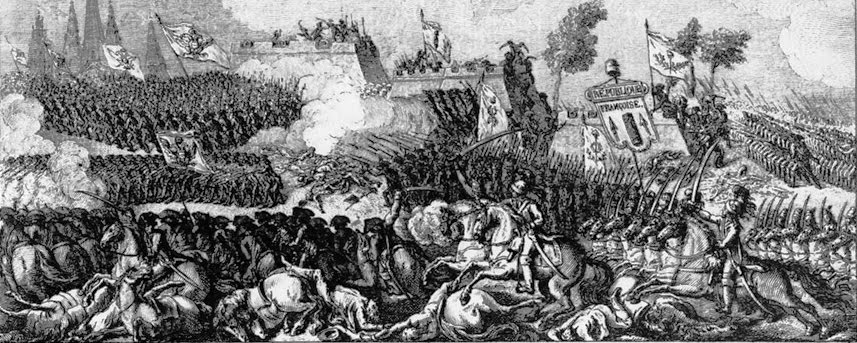Third, the ordre profond was
also preferable in that it avoided the need for any excessive use of firearms.
Muskets, as mentioned, were slow to reload, cumbersome, and inaccurate.
Furthermore, the thick white smoke clouds from the gunpowder blurred troops’
vision, and it was often necessary to either fire blindly or to wait for the
smoke to clear.[1]
Many went so far as to blame the French losses in the Seven Years’ War entirely
on firearms.[2]
Tacticians argued that the French character – specifically the Frenchman’s
passion for and skill on the offensive – would more than make up for a loss of
firepower.[3] Consequently, what the
column lost in firepower it made up for with cold steel, or arme blanche. Even
Voltaire suggested that “the fire of the French is . . . usually inferior to
that of other nations;” yet “the French nation attacks with the greatest
impetuosity . . . it is very difficult to resist its shock.” [4] Lazare Carnot, a Revolutionary-era
Minister of War, argued that arme blanche “has always been more
brilliant, more efficacious, and more protracted than the defence with
firearms.” [5]
The fast pace attack which the ordre profond allowed would reduce the
amount of time troops spent under enemy fire, and thereby reduce the need to
fire back. Armed with bayonets or pikes, soldiers would pierce enemy ranks
quickly and efficiently. Thus, the ordre profond worked on a strategic
level while at the same time better fit with the spirit and élan of the
independent, creative, and courageous French character.[6] Not only would the soldier
be in a better position tactically, but he would be more inspired, more
motivated, and more comfortable with the work of his own steel.
[1] Saxe, “My Reveries,”
110.
[2] Ken Alder, Engineering
the Revolution: Arms and Enlightenment in France, 1763-1815 (Princeton:
Princeton University Press, 1997), 35.
[3] Saxe, “My
Reveries,” 145.
[4] Voltaire,
quoted in Lynn, Bayonets of the Republic, 187.
[5] It is important
to note here that Frederick the Great did not agree with this. Despite initial
writings agreeing with limiting the role of firearms in battle, Frederick later
concluded that ‘to attack the enemy without procuring oneself the advantage of
superior, or at least equal fire, is to wish to fight against an armed troop
with clubs, and this is impossible.’ Frederick, quoted in Phillips, 165; Lazare
Carnot, A Treatise on the Defence of
Fortified Places, written under the direction and published by the Command of
Buonaparte for the Instruction and Guidance of the Officers of the French Army,
trans. Lt.-Col. Baron de Montalembert (London: Whitehall Military Library,
1814), 93.
[6] This idea
continued just as strongly into the Revolutionary wars (Marshal MacDonald claiming
quite blatantly that “the French
character lends itself better to attack than defense. Jacques
MacDonald, Recollections of Marshal Macdonald, Duke of Tarentum, ed.
Camille Rousset, trans. Stephen Louis Simeon (London: Richard Bentley and Son,
1893), 103); It is not surprising then, that by the Revolutionary
Period, the bayonet was so celebrated that, Lynn suggests, it was a
“revolutionary symbol to rival the red liberty cap and the tricolor cockade”
which “evoked images of citizen-soldiers braving death at close quarters to
defend the Patrie. Like a Crusader’s cross,” Lynn notes, “it seemed to insure
victory by its very presence.” Lynn, Bayonets of the Republic, 188-189.

No comments:
Post a Comment